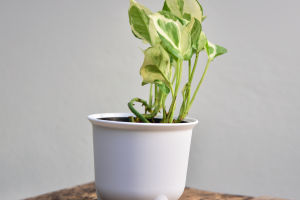Lykkers, have you ever thought about this? We all love fresh breath, and for many of us, chewing gum is a daily habit.
But have you ever wondered what exactly happens when you chew that gum? A new study from UCLA has revealed something shocking—chewing gum might be releasing hundreds to thousands of plastic particles into your saliva!
Plastic pollution isn't just about the environment anymore. Researchers have already found microplastics in human blood, lungs, and even the brain. Now, scientists warn that gum could be another sneaky way these tiny particles enter our bodies. Let's break it down and see what this means for us.
How Did Scientists Discover This?
A team led by Dr. Sanjay Mohanty at UCLA tested 10 different types of chewing gum, including both synthetic and natural varieties. They found that:
Every gram of gum released around 100 microplastic particles into saliva.
Some gums released as many as 637 microplastic particles per gram!
94% of these particles were released within the first 8 minutes of chewing.
This means that every time you chew gum, you might be swallowing tiny bits of plastic without even realizing it!
Why Is This Happening?
The release of microplastics isn't caused by saliva or digestion—it's mainly due to the mechanical action of chewing. This means that the simple act of chewing breaks down the gum's structure, causing microplastics to be released into the mouth.
Even more concerning, the study found that some “natural” chewing gums contained synthetic polymers. This suggests that during manufacturing or packaging, even natural gums might get contaminated with plastics.
Should We Be Worried?
So far, there's no direct evidence that microplastics harm the human body. But the fact that they're found in our organs—including the brain—raises serious questions.
Dr. Mohanty and his team emphasize that their goal isn't to create panic but to make people aware of the hidden ways microplastics might be entering our bodies. More research is needed to understand whether these tiny plastic particles affect our health in the long run.
What Do Experts Say?
The American Candy Association responded to the study, stating that chewing gum has been safely consumed for over 100 years. They also reassured consumers that all ingredients in gum meet FDA safety standards.
However, some health experts believe that we should take a precautionary approach. They call for more research into the long-term health effects of consuming microplastics through gum and other foods.
What Can We Do About It?
If you're concerned about microplastics in gum, here are a few things you can do:
Choose natural alternatives: Look for gum brands that clearly state their ingredients and avoid synthetic polymers.
Reduce chewing gum consumption: If you're a frequent gum chewer, consider cutting back.
Stay informed: As more studies come out, keep an eye on new findings about microplastics and their effects on health.
Should You Keep Chewing Gum?
At the end of the day, chewing gum is a personal choice. While the risks of microplastics aren't fully understood yet, this study is a wake-up call for us to pay attention to what we put in our mouths.
Lykkers, what do you think? Will you keep chewing gum, or are you rethinking your habits? Let's chat in the comments!


